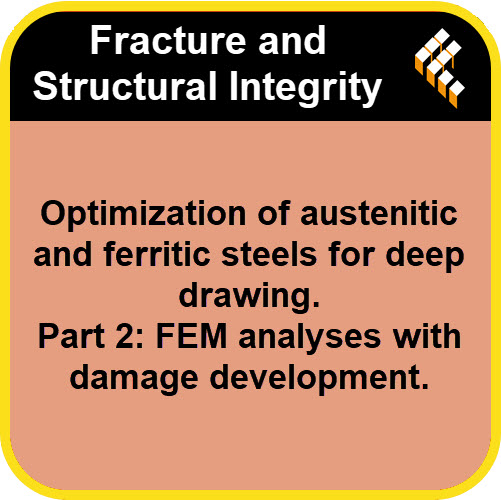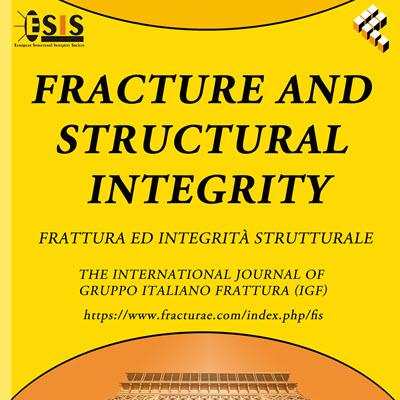Fracture and Structural Integrity: The Podcast
Stay at the cutting edge of fracture mechanics and structural integrity research with the official podcast of the Fracture and Structural Integrity journal. Join us for insightful interviews with top researchers, in-depth discussions of groundbreaking papers, and explorations of emerging trends in the field.
RSS Spotify YouTube Amazon Music
Optimization of austenitic and ferritic steels for deep drawing.Part 2: FEM analyses with damage development
2025-10-25
https://www.fracturae.com/index.php/fis/article/view/5702
Deep drawing of sheet metal is a crucial industrial process due to its high productivity and low cost per unit produced. Stainless steels are ideal for this process, given their high deformability compared to other steels. Despite its apparent simplicity, understanding how the material deforms during deep drawing is essential to predict the final result. From this point of view, simulation via finite element modelling (FEM) represents a rapid and cost-effective alternative to experimental testing. When properly calibrated, FEM models allow for analysing stress and strain distribution, identifying areas at risk of failure, calculating final wall thickness, and optimizing die geometry. This research led to the development of a FEM model capable of simulating deep drawing under different operating conditions, steel types (AISI 304 and AISI 430) and lubrication. The model was calibrated and validated by comparing the numerical results with those obtained from a series of Erichsen tests. To ensure the accuracy of the true stress-strain curves, the steels were thoroughly characterized through tensile tests, Erichsen tests, and metallographic analyses. A specific method was also developed to represent the true stress-strain curve beyond necking, up to physical failure of the steel. The experiment was conducted according to the principles of DoE (Design of Experiments), combined with statistical analysis using the ANOVA technique.
DownloadFiletype: MP3 - Size: 3 MB - Duration: 14:31m (320 kbps 44100 Hz)
Powered by Podcast Generator, an open source podcast publishing solution | Theme based on Bootstrap
